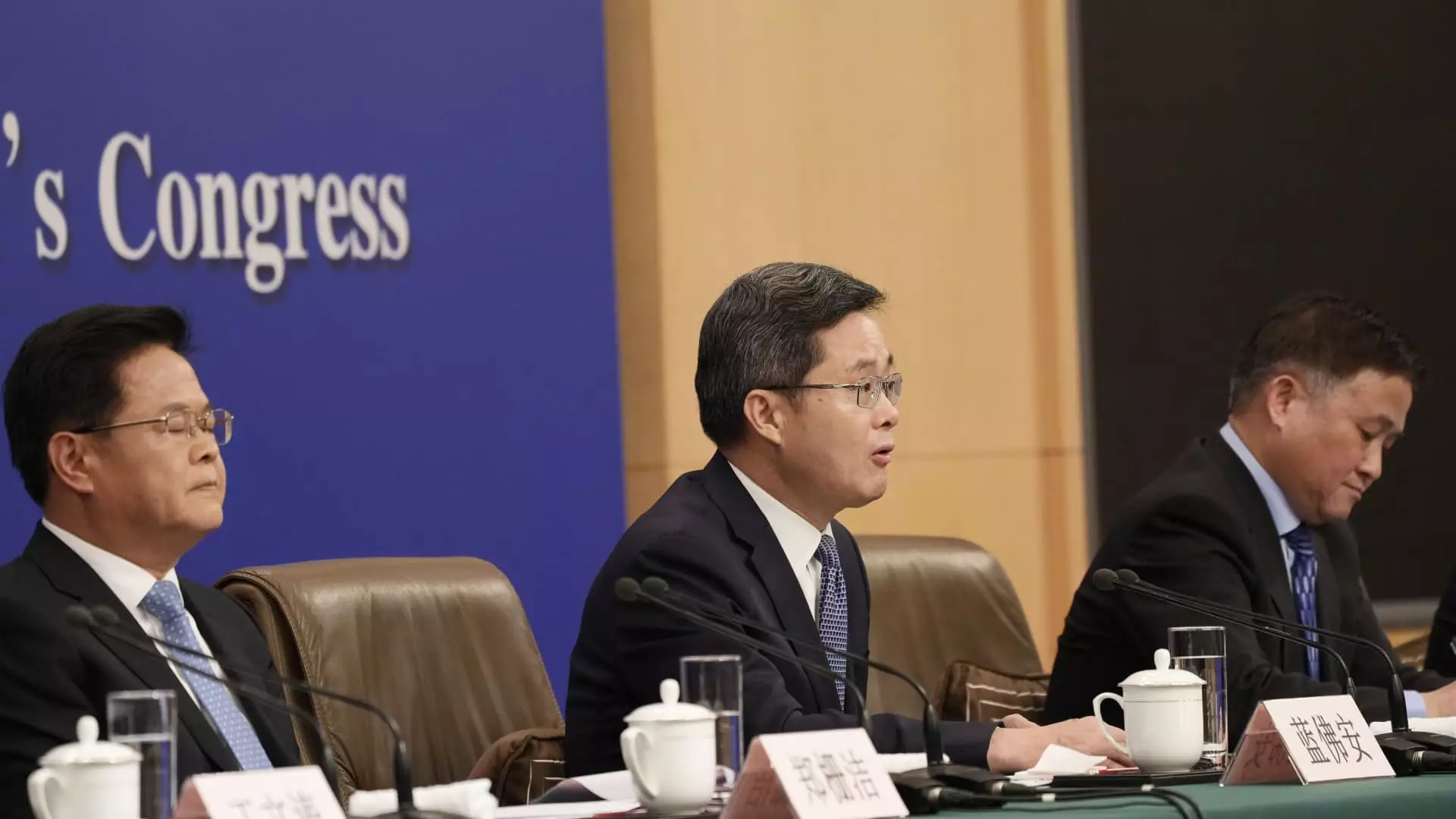As China grapples with a complex economic environment, the upcoming press conference by Finance Minister Lan Fo’an is generating considerable anticipation. Scheduled for Saturday, the briefing is expected to unveil measures aimed at bolstering the Chinese economy in the face of growing pressures. Economists have been vociferous in their calls for enhanced fiscal support amid indications that the current structural policies may not suffice to address the economic slowdown. The timing of this announcement is pivotal, as it coincides with a series of high-level discussions led by President Xi Jinping, who has advocated for stronger monetary and fiscal policy interventions. Nevertheless, the lack of concrete strategies behind these discussions raises questions about the effectiveness of the government’s response to the economic challenges.
Analysts from various financial institutions have differing predictions regarding the scale of the fiscal stimulus required to reinvigorate China’s economy. Estimates range significantly, from approximately 2 trillion yuan ($283.1 billion) to an astonishing 10 trillion yuan. Such variances highlight the uncertainties that envelop the Chinese economic landscape. Furthermore, Ting Lu, chief economist at Nomura, underscores an essential aspect of any upcoming stimulus package: not only must the magnitude of the financial push be substantial, but the allocation of these funds is equally critical. Previous patterns indicate that local government finances tend to dominate funding discussions, potentially sidelining vital consumer-centric initiatives that stimulate broader economic activity.
Recent data concerning China’s retail sector depicts an unsettling stagnation, complicating the country’s path towards a robust recovery. As consumer spending remains lackluster, and housing market troubles persist, the likelihood of achieving the annual GDP growth target of around 5% appears increasingly remote. The GDP growth rate recorded at 5% for the first half of the year has already led to mounting concerns surrounding the actualization of the end-of-year objectives. A critical moment will arrive on October 18, when the National Bureau of Statistics is set to release third-quarter GDP figures, a development that could significantly influence market sentiments and government policy responses.
Recent fluctuations in mainland Chinese stock markets reflect the profound impact of perceived governmental support measures coupled with the ongoing economic volatility. The initial relief rally stemming from major policy announcements, including interest rate cuts by the People’s Bank of China (PBOC) and extended real estate support measures, demonstrated a brief resurgence in investor confidence. However, this optimism quickly turned to apprehension, as the momentum dissipated and major indexes reverted to levels seen earlier in the month. The CSI 300 Index, which enjoyed its most robust week since 2008, has since lost steam, revealing vulnerabilities within the market and highlighting the fragility of investor sentiment.
In an effort to mitigate the decline, the National Development and Reform Commission (NDRC) has pledged to fast-track the deployment of 200 billion yuan allocated for investment projects. While this initiative signifies a willingness to act, it importantly did not include any new stimulus announcements. The hesitation to announce additional support further illustrates the precarious position of policymakers who must weigh immediate economic needs against long-term fiscal responsibility.
As China prepares for significant announcements regarding fiscal policy, the tension between immediate economic necessities and strategic long-term planning remains palpable. With the global economic landscape increasingly interconnected and influenced by myriad factors, the choices made by Chinese authorities will resonate not only within its borders but globally as well. The forthcoming press conference represents a critical juncture, wherein strategic decisions can either pave the way for recovery or deepen the prevailing economic challenges. Stakeholders, from ordinary consumers to global investors, keenly await the government’s signal on the path ahead, as China’s economic narrative continues to unfold amidst uncertainty and cautious optimism.

